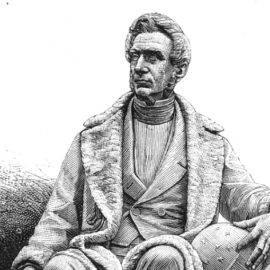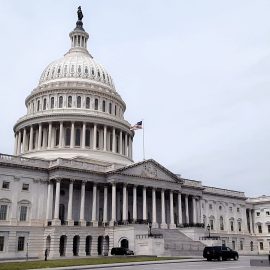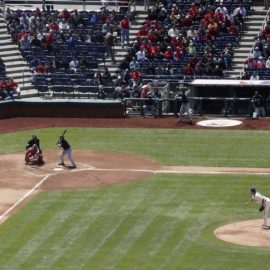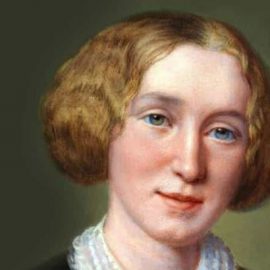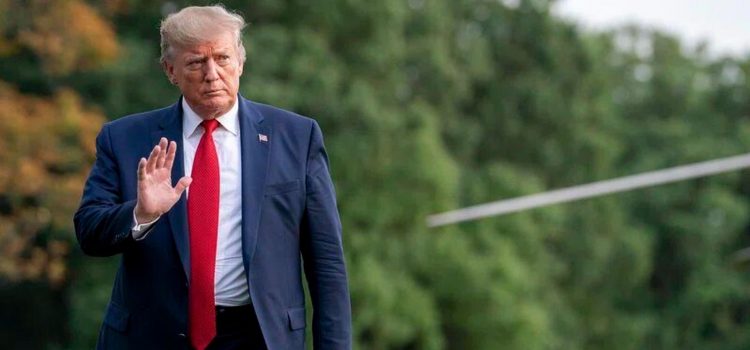
What is the Trump presidency timeline? When did Donald Trump become president?
The Trump presidency timeline started in June 2015 when he announced his presidential campaign. From there, he made divisive speeches, won the 2016 election, and then went on to lose the 2020 election.
Continue reading for more on Donald Trump’s presidential campaign and a timeline of his presidency.
Launching the Campaign
The Trump presidency timeline started in June 2015 when Trump officially announced his presidential campaign with a divisive speech that included controversial remarks about Mexican immigrants, alleging that they were “rapists” and calling for a border wall to separate the US from Mexico. Haberman notes further that Trump’s campaign benefited from adopting a carnival-like atmosphere, featuring stunts and confrontations—gaining significant media attention for himself while keeping it from his rivals.
(Shortform note: Although critics considered Trump’s “Build the Wall” rhetoric as evidence of his xenophobia, it’s worth noting that his Democratic successor, Joe Biden, continued construction on certain segments of the border wall. Despite his initial promise to halt the project, the Biden administration opted to complete unfinished sections, citing reasons such as addressing gaps in border security and potential national security concerns. The decision sparked criticism from both sides of the political spectrum and highlighted similarities between Trump’s immigration policies and Biden’s.)
To the shock (and dismay) of many in the mainstream press, the Trump campaign gained traction with Republican voters, who were drawn to his confrontations with journalists, protesters, and his fellow candidates.
(Shortform note: One study highlighted the unprecedented amount of free media exposure Trump garnered, which far surpassed that of his Republican and Democratic rivals. The study estimated that Trump’s coverage was worth nearly $2 billion—nearly twice that of his Republican rivals’ combined total. This figure underscored his ability to dominate news cycles and shape public discourse without significant campaign spending or fundraising.)
The General Election
After finishing in second place in the Iowa caucuses (one of the first major contests of the US presidential election), Trump went on a winning streak in New Hampshire, Nevada, and South Carolina, securing a delegate lead that cemented his position as frontrunner for the GOP (Republican) nomination, which he ultimately clinched in May. After he selected Mike Pence, the evangelical governor of Indiana, as his vice presidential running mate, the stage was set for Trump’s general election showdown with the Democratic nominee, former Secretary of State and First Lady Hillary Clinton. Despite a tumultuous and controversial campaign, Trump defied expectations and shocked the world by winning the presidency on November 8, 2016.
| GOP Elites and the Failure to Protect Democracy In How Democracies Die, political scientists Daniel Ziblatt and Steven Levitsky argue that the Trump campaign represented a unique threat to democracy because the candidate showed a level of hostility and contempt for traditional democratic norms unseen before in a major-party nominee. They further argue that the Republican Party failed to stop Trump’s nomination and then failed to oppose him once he was the nominee. They write that despite Trump’s initial failure to secure major endorsements, his preexisting celebrity status and support from influential right-wing media figures like Sean Hannity and Ann Coulter enabled him to communicate directly with voters, generating extensive media coverage and surpassing the influence of traditional endorsements. This enabled him to rack up impressive primary wins. Moreover, they argue, the GOP as an institution was unable to deny Trump the nomination at the convention, despite attempts by some party activists to change convention rules and “unbind” delegates pledged to Trump. As a result, GOP leaders faced a dilemma in the general election when confronted with Trump’s authoritarian tendencies: Either campaign against Trump and have the party suffer a defeat, or support him and risk democracy’s survival. In the end, write Ziblatt and Levitsky, GOP leaders chose party over country, standing with Trump over the well-being of the democratic process. They prioritized partisan interests by refusing to cross party lines and support Hillary Clinton. |
The 2020 Election
The Covid-19 pandemic was the backdrop against which the 2020 presidential campaign played out. Haberman notes that Trump was often bewildered and dismayed by the dwindling attendance at his 2020 rallies compared to those in 2016, largely owing to the pandemic and people being unwilling to risk infection by appearing at large public gatherings.
Trump’s woes continued into the televised debate with Democratic nominee Joe Biden. There, the president delivered what was widely perceived as an aggressive, hostile, and mean-spirited debate performance. He heckled and mocked Biden about the former vice president’s deceased son Beau and ridiculed Biden’s other son Hunter’s well-publicized struggles with drug addiction. After his debate performance, Trump’s polling numbers only grew worse—and he began telling aides that he believed the polls were fraudulent and that the election would be stolen from him.
(Shortform note: Trump’s suspicions about the accuracy of polls may have had some merit. National polls in the 2020 election generally predicted a much larger margin of victory for Joe Biden than what ultimately occurred. Polling experts have examined sampling errors and non-response biases that led to an underrepresentation of some voters—particularly non-college-educated whites who leaned toward Trump. Additionally, the pandemic introduced further uncertainties with changes in voting behavior, increased mail-in voting, and varying levels of enthusiasm among voters that made polling difficult.)

